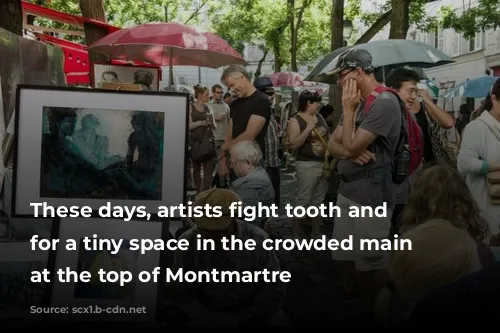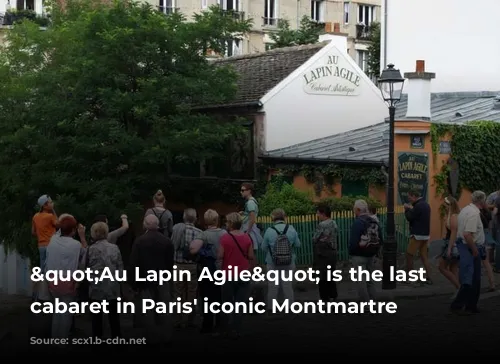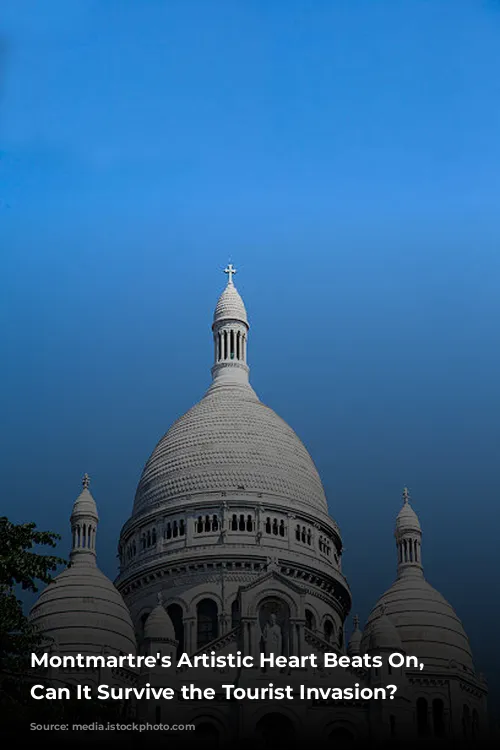Imagine a cozy room, dimly lit, with a low ceiling, a space once bustling with the energy of young, aspiring artists like Picasso and Modigliani. This is the Lapin Agile, the last remaining cabaret in Montmartre, a charming hilltop neighborhood in the heart of Paris. The air is filled with the sounds of traditional French music as tourists from around the world gather, drawn to the Lapin Agile’s unique charm.
This historical cabaret, surrounded by acacia trees, embodies the artistic spirit that once defined Montmartre. However, the neighborhood has undergone a dramatic transformation in recent decades, with the influx of mass tourism threatening to overshadow its artistic heritage.

A Village in the City, Threatened by Change
The steep hills and breathtaking views of Montmartre once attracted artists and bohemian souls seeking inspiration and affordable living. Today, however, the influx of millions of tourists has changed the landscape of this once-artistic haven.
Yves Mathieu, the Lapin Agile’s owner, expresses his concern about the proliferation of souvenir shops, selling generic Parisian trinkets that have replaced the genuine character of Montmartre’s cobblestone streets.
He reminisces about the days when Picasso and Toulouse-Lautrec, giants of modern art, graced the Lapin Agile with their presence, and their paintings were exchanged for a simple meal. He points to the simple wooden tables and benches, a testament to the Lapin Agile’s humble beginnings.

The Legacy of Montmartre: From Artists to Tourists
The walls of the Lapin Agile are adorned with copies of iconic works by Picasso and Toulouse-Lautrec, a reminder of the rich artistic legacy that Montmartre once held. Folk singers, like Leo Ferre, Georges Brassens, and the recently deceased Charles Aznavour, also launched their careers in this vibrant neighborhood.
Despite the artistic history that continues to resonate within the Lapin Agile’s walls, the iconic hilltop of Montmartre is facing a daunting challenge. The arrival of millions of tourists each year, eager to admire the Sacre Coeur Basilica, panoramic views, and the area’s vineyards, is creating a tension between preservation and commercialization.

The “Republic of Montmartre” Fights Back
The Place du Tertre, a charming village-like square at the peak of Montmartre, is in danger of losing its unique identity and becoming a “Disneyland” for tourists, according to Alain Coquard, president of the “Republic of Montmartre,” an association dedicated to preserving the neighborhood’s authenticity.
Although Montmartre has not yet reached the level of tourism saturation that Venice experiences, with its 24 million annual visitors, there are genuine concerns about the future. Coquard acknowledges the importance of preserving the artistic and historical heritage that still exists in Montmartre, highlighting the need for protection and preservation.

The Price of Fame: Displaced Locals and Rising Rents
For long-time residents, the influx of tourists and the subsequent commercialization have a more tangible impact. Spiraling rents, driven by the demand for property from wealthy buyers and tourists, have forced local businesses to close their doors.
Frederic Loup, the owner of a pharmacy that has served the local community since 1927, recounts the loss of local businesses – the baker, the butcher – all pushed out by the exorbitant rents that only souvenir shops can afford.
The affordability that once attracted artists to Montmartre has vanished. The neighborhood has become a magnet for the rich and famous, pushing out the very people who gave it its unique character.

The Ghost of “Amelie” and the Impact of Hollywood
The release of the 1991 film “Amelie,” with its romantic depiction of Montmartre’s picturesque streets, further cemented the neighborhood’s popularity among tourists.
While Hollywood celebrated Montmartre’s charm, it also contributed to the gentrification that is now pushing out local residents. Celebrities like Johnny Depp have been drawn to the neighborhood, adding to its allure but also driving up prices.

The Vanishing Dream: Artistic Life Under Pressure
The cost of living in Montmartre has risen dramatically in recent decades. Thirty years ago, apartments cost around 1,500 euros per square meter. Today, prices have soared to 10,000 or 20,000 euros per square meter.
This exponential increase in property prices makes it impossible for aspiring artists to follow in the footsteps of Pissarro and Renoir by moving to the neighborhood.
The artists who still work in Montmartre often rely on selling sketches to tourists or creating paintings of city landscapes for visitors. However, even their livelihood is threatened by the competition.

The Battle for Space: Artists vs. Tourists
Chinese-made souvenirs flood the local shops, sold at bargain prices, leaving street artists like Midani M’Barki, who leads the Paris-Montmartre artists’ association, feeling exploited and pushed aside. He criticizes the influx of cheaply made souvenirs and the expansion of restaurant terraces, which are encroaching on artists’ traditional space.
Despite a recent bylaw granting artists the right to work on the sidewalks, the expanding restaurant terraces are squeezing them out, forcing them to work in less desirable locations.
M’Barki expresses his frustration, stating, “We’re now in the gutter and the terraces are thriving.” He passionately argues that artists deserve a fair share of the sidewalk space.
“If we don’t get it, we’ll leave. And without us, there won’t be any Montmartre,” he warns.
The future of Montmartre remains uncertain. While its artistic legacy persists, the neighborhood faces a delicate balancing act between preserving its unique character and catering to the demands of mass tourism. The outcome of this struggle will determine whether the artistic spirit that once flourished on this Parisian hilltop will be able to withstand the pressures of commercialization.







